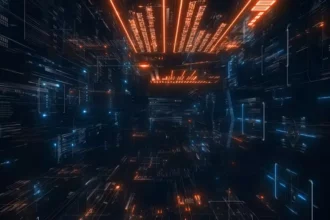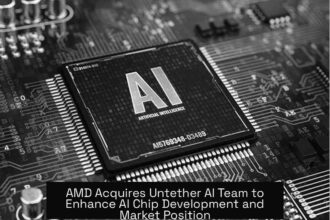Table of Contents
ToggleNew Evidence Rewrites the Origins of the Dead Sea Scrolls, One of Judaism’s Ancient Texts
Recent AI research suggests the Dead Sea Scrolls may be older than previously believed. This discovery has significant implications for understanding Judaism’s ancient texts.
Challenges in Dating the Dead Sea Scrolls
Dating ancient artifacts is complex. Experts use various techniques like radiocarbon dating, but these methods have limits. The challenge increases because many Dead Sea Scrolls lack labels, making their timelines unclear.
How AI Models Handwriting Styles
- A Dutch scholar from the University of Groningen and his team used AI to analyze handwriting styles in ancient manuscripts.
- The AI model, called Enoch, combines handwriting data with radiocarbon dating to estimate manuscript ages.
- This method allows dating even undated scroll fragments by recognizing handwriting patterns linked to specific periods.
Building and Training the Enoch AI Model
The process began by creating datasets from historic manuscripts in Israel and the West Bank. Radiocarbon dating provided approximate ages. The AI then learned handwriting styles connected to these dates, enabling it to predict the age of unknown documents.
Accuracy and Results from the AI Model
| Evaluation Criteria | Outcome |
|---|---|
| Realistic age estimates | 79% |
| Non-realistic age estimates | 21% |
The Enoch model often assigns older dates to many Dead Sea Scrolls than previous handwriting analyses did.
Implications of the New Dating Approach
- This tool offers a fresh perspective on the date and context of the Dead Sea Scrolls.
- It could rewrite the timeline for key ancient Judaic texts.
- The method holds promise for dating other partially or undated ancient manuscripts.
New Window Into History
“With the Enoch tool we have opened a new door into the ancient world… especially now that we have established that two biblical scroll fragments come from the time of their presumed authors.”
Key Takeaways
- AI models can date ancient manuscripts by analyzing handwriting linked to radiocarbon data.
- The Dead Sea Scrolls may be older than formerly believed.
- The Enoch tool predicts scroll ages with 79% realistic accuracy.
- This approach can assist with other undated or partially dated historical texts.
New Evidence Rewrites the Origins of the Dead Sea Scrolls, One of Judaism’s Ancient Texts
The Dead Sea Scrolls may be much older than we thought. A Dutch scholar’s groundbreaking use of AI technology recently revealed a new timeline for these sacred texts, shaking up years of traditional dating methods. This fresh insight is a game changer for historians, biblical scholars, and anyone fascinated by ancient manuscripts.
So, how did artificial intelligence come into play with these ancient documents? Let’s dive into the fascinating story behind this scientific breakthrough.
Dating ancient artifacts is a tough nut to crack. Scientists often rely on clues like radiocarbon dating and handwriting analysis. But problems arise when documents are unlabeled or poorly preserved. The Dead Sea Scrolls, discovered in the mid-20th century, included many such unlabeled pieces, making it difficult to pin down exact dates for some of them.
Enter Mladen Popovic from the University of Groningen in the Netherlands, who led a team that transformed the process. Instead of relying solely on traditional methods, Popovic’s team integrated AI to analyze handwriting styles across manuscripts with known dates. This combined AI approach wasn’t just clever; it was revolutionary.
The key innovation was developing the AI model named Enoch, inspired by the biblical figure linked to some ancient texts. Enoch combines data from handwriting samples and radiocarbon dating to objectively estimate the age of manuscripts. Essentially, it learns what handwriting looked like in different historical periods, then infers the likely dates of undated texts by matching handwriting styles.
The team began by assembling a massive dataset of ancient manuscripts from sites around modern-day Israel and the West Bank. Each document’s radiocarbon date served as a timestamp, teaching the AI when specific handwriting styles were in use.
“With the Enoch tool, we have opened a new door into the ancient world, like a time machine, that allows us to study the hands that wrote the Bible,” the researchers wrote.
Imagine handwriting as a signature frozen in time. By teaching Enoch to recognize and date these “signatures,” the AI can now estimate when a scroll was written with surprising accuracy.
How accurate is this AI? In tests involving 135 Dead Sea Scrolls, Enoch was realistic about 79% of the time. That’s pretty impressive for ancient documents whose dates were once difficult to guess. Of course, 21% of the estimates fell outside expected ranges, reflecting the inherent uncertainty in working with fragments and faded ink.
What does this mean for the Dead Sea Scrolls themselves? The AI model, combined with traditional radiocarbon dating, suggests many scrolls are older than previously believed. This challenges prior assumptions made by paleographers who relied on manual handwriting analysis alone.
So why does that matter? Well, the Dead Sea Scrolls hold some of the oldest copies of biblical texts and other Jewish writings. Pushing their origin further back could reshape our understanding of early Judaism and the cultural context that shaped these sacred writings.
New Evidence Rewrites the Origins of the Dead Sea Scrolls presents both exciting opportunities and new questions. Additional research and more data are needed to refine these dates further. But the promise is clear: this AI method offers a powerful new tool for historians tackling undated manuscripts worldwide.
Think about it—historians often face manuscripts with missing or uncertain origins. Traditional methods can leave wide date ranges or no answers at all. Enoch’s AI-driven approach bridges this gap by providing objective, data-backed age estimates. This advance could extend far beyond the Dead Sea Scrolls and revolutionize the study of ancient texts globally.
For anyone interested in archaeology or religious history, this new approach adds layers of meaning to scrolls that recorded Judaism’s formative ideas. It invites us to rethink timelines and challenge assumptions entrenched for decades.
Here’s a practical tip for enthusiasts: next time you hear about ancient manuscripts, remember that the story behind them is still unfolding. Science, technology, and even AI are rewriting history—and often quite literally rewriting the story by revealing new facts about where and when texts were created.
In summary, the fusion of AI and radiocarbon dating to study the Dead Sea Scrolls is a stunning example of how modern science enriches our understanding of ancient history. It’s a brilliant reminder that even the oldest texts can hold new secrets waiting to be uncovered. Who knew that an AI named Enoch could become a virtual time machine to peer into the past?
What new method was used to date the Dead Sea Scrolls?
Researchers used an AI model called Enoch to analyze handwriting styles alongside radiocarbon dating. This approach helps estimate the age of manuscripts more accurately than before.
How does the AI model improve dating accuracy for these ancient texts?
Enoch compares handwriting features with dated manuscripts to find age ranges. It correctly estimated dates about 79% of the time in tests on 135 scrolls.
What challenges do experts face when dating the Dead Sea Scrolls?
Many scrolls lack labels or precise dates. Traditional methods often can’t pinpoint their age without extra clues, making dating difficult.
What impact does this new dating have on our understanding of the Scrolls?
This method suggests some Dead Sea Scrolls are older than thought. It could reshape timelines and the history of biblical manuscripts.
Can the AI tool be used for other ancient documents?
Yes, the model could help date other partially dated manuscripts by analyzing handwriting and combining it with existing data sets.



